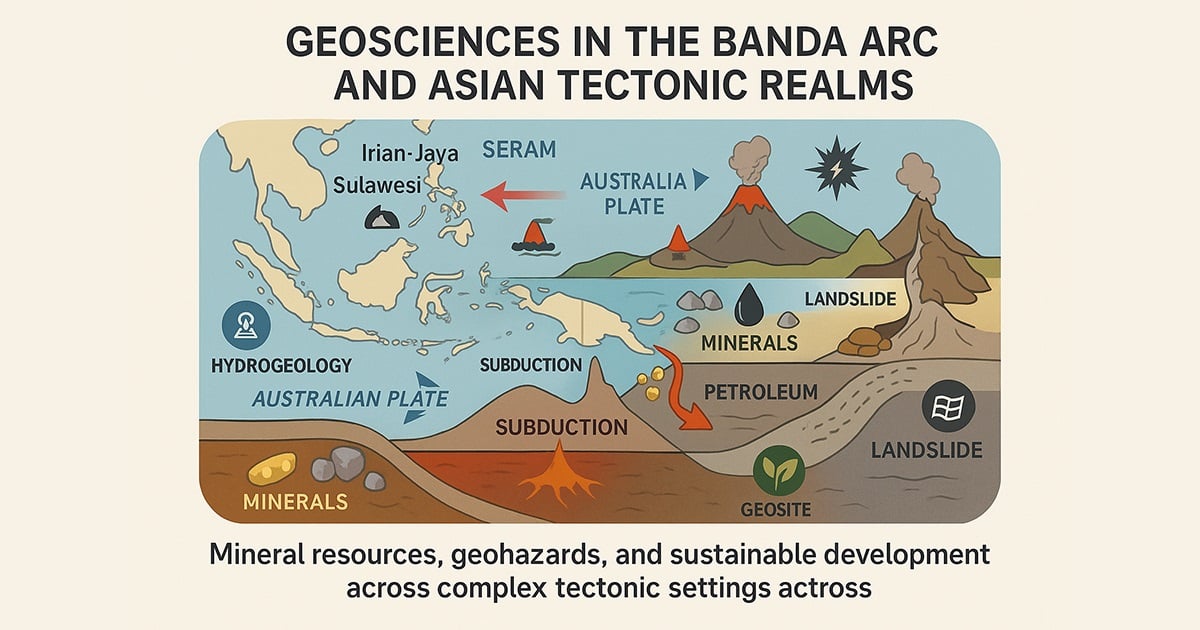- 2.2Impact Factor
- 4.4CiteScore
- 19 daysTime to First Decision
Geosciences in the Banda Arc Region: Resources, Hazards and Sustainable Development
Special Issue Information
Dear Colleagues,
This Special Issue of Minerals explores the mineralogical, geological, geochemical, geophysical, and environmental dimensions of the Banda Arc system and surrounding regions across Asia. The Banda Arc represents one of the most complex tectonic systems globally, involving arc–continent collisions between the Australian Plate, the Banda Slab, and several microplates. To broaden the scope of research, this Special Issue welcomes contributions that address the entire tectonic realm of the Asian region, including the northern Banda Sea area (e.g., Irian Jaya, Seram, Sulawesi), as well as southeastern and southern zones (e.g., Timor-Leste and Eastern Indonesia).
This dynamic setting hosts a diverse array of ore-forming systems and mineral deposits—hydrothermal, magmatic, and metamorphic—that are deeply interwoven with its tectonic and magmatic evolution. It also encompasses sedimentary basins with the potential for petroleum. However, the region faces severe geological risks such as frequent seismicity, volcanic activity, and landslides, which threaten infrastructure and populations while complicating the sustainable exploitation of resources. Sedimentary archives provide valuable insights into landscape changes and hazard-related processes across the Asian tectonic framework.
Dr. Marina Cabral Pinto
Prof. Dr. Ron Alan Harris
Dr. João Pratas
Dr. Fernando Carlos Lopes
Guest Editors
Manuscript Submission Information
Manuscripts should be submitted online at www.mdpi.com by registering and logging in to this website. Once you are registered, click here to go to the submission form. Manuscripts can be submitted until the deadline. All submissions that pass pre-check are peer-reviewed. Accepted papers will be published continuously in the journal (as soon as accepted) and will be listed together on the special issue website. Research articles, review articles as well as short communications are invited. For planned papers, a title and short abstract (about 250 words) can be sent to the Editorial Office for assessment.
Submitted manuscripts should not have been published previously, nor be under consideration for publication elsewhere (except conference proceedings papers). All manuscripts are thoroughly refereed through a single-blind peer-review process. A guide for authors and other relevant information for submission of manuscripts is available on the Instructions for Authors page. Minerals is an international peer-reviewed open access monthly journal published by MDPI.
Please visit the Instructions for Authors page before submitting a manuscript. The Article Processing Charge (APC) for publication in this open access journal is 2400 CHF (Swiss Francs). Submitted papers should be well formatted and use good English. Authors may use MDPI's English editing service prior to publication or during author revisions.
Keywords
- Banda Arc
- Asia
- Irian Jaya
- Seram
- Sulawesi
- Timor-Leste
- tectonics
- volcanism
- mineral resources
- hydrogeology
- petroleum geology
- environmental geochemistry
- GIS
- geodiversity
- sustainable development

Benefits of Publishing in a Special Issue
- Ease of navigation: Grouping papers by topic helps scholars navigate broad scope journals more efficiently.
- Greater discoverability: Special Issues support the reach and impact of scientific research. Articles in Special Issues are more discoverable and cited more frequently.
- Expansion of research network: Special Issues facilitate connections among authors, fostering scientific collaborations.
- External promotion: Articles in Special Issues are often promoted through the journal's social media, increasing their visibility.
- e-Book format: Special Issues with more than 10 articles can be published as dedicated e-books, ensuring wide and rapid dissemination.

